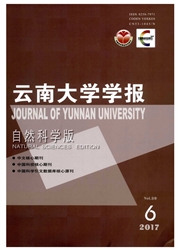

 中文摘要:
中文摘要:
用构建克隆文库的方法对珠江口沉积物中4个层位的甲烷相关古菌群落多样性特征进行研究.结果表明甲烷相关古菌群落结构主要可以分为3类,分别为Methanosaeta,Methanomicrobiales和Methanosarcinales/ANME,且其组成随沉积物深度的改变发生规律变化.Methanosaeta和Methanomicrobiales是属于乙酸和H2/CO2利用型甲烷产生菌,在克隆文库中的含量随沉积物深度的增加而减少;Methanosarcinales/ANME主要由甲烷氧化菌和甲基利用型甲烷产生菌组成,在克隆文库中的含量随沉积物深度的增加而增加.甲烷相关古菌群落结构的变化规律说明,在SMTZ区域及以上,甲烷产生以H2/CO2和乙酸型为主;在SMTZ区域以下,以甲基利用型为主;在SMTZ区域,主要是甲烷氧化过程,由古菌类群ANME-2a负责.
 英文摘要:
英文摘要:
Based on clone and sequencing of methanogen-related 16S rRNA genes,the diversity and composition of methanogen-related archaeal communities in Pearl River Estuary sediment were investigated.The phylogenetic results suggested the methanogen-related archaeal communities in the sediment were mainly composed of three types of groups,Methanosaeta,Methanomicrobiales and Methanosarcinales/ANME respectively.The variation of detected archaeal phylotypes by depth indicated that Methanosaeta and Methanomicrobiales were predominant groups above SMTZ and the content decreased by depth;Methanosarcinales/ANME was dominant group within or below SMTZ and the content increased by depth.Methanosaeta and Methanomicrobiales mainly belong to acetate-and H2/CO2-utilizing methanogen,which indicated methanogenesis above SMTZ mainly depend on acetate-and H2/CO2 as substrates.Methanosarcinales/ANME was responsible for methane oxidation and methyl group-utilizing methanogenesis,which suggested that methane oxidation and methyl group-utilizing methanogenesis were main metabolic processes within and below SMTZ.The subgroup ANME-2a also was identified as methane oxidizer in Pearl River sediment.
 同期刊论文项目
同期刊论文项目
 同项目期刊论文
同项目期刊论文
 Enlightment of American Green Land Rainwater Management Art to Chinese Modern landscape Architecture
Enlightment of American Green Land Rainwater Management Art to Chinese Modern landscape Architecture Eco-Design Study on Vegetable Technological and Ecological Farm at Dangwu Town of Gui’an New Area in
Eco-Design Study on Vegetable Technological and Ecological Farm at Dangwu Town of Gui’an New Area in Vertical distribution and diversity of sulfate-reducing prokaryotes in the Pearl River estuarine sed
Vertical distribution and diversity of sulfate-reducing prokaryotes in the Pearl River estuarine sed Stratification of Archaeal communities in shallow sediments of the Pearl River Estuary, Southern Chi
Stratification of Archaeal communities in shallow sediments of the Pearl River Estuary, Southern Chi Genome Announcement: Complete genome sequence of the first obligate piezophilic hyperthermophilic ar
Genome Announcement: Complete genome sequence of the first obligate piezophilic hyperthermophilic ar Discovering the roles of subsurface microorganisms: Progress and future of deep biosphere investigat
Discovering the roles of subsurface microorganisms: Progress and future of deep biosphere investigat 期刊信息
期刊信息
